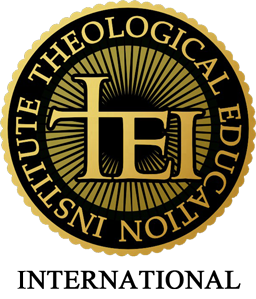The Bible as the Source for Verifiable History
John C. Rankin
(February 3, 2013)
Genesis 1 is the theological grand design, and in Genesis 2:4-7 we have segue to the specificity of Genesis 2:8-14. This is just prior to the gift of human freedom:
“Now the LORD God had planted a garden in the east, in Eden; and there he put the man he had formed. And the LORD God made all kinds of trees grow out of the ground – trees that were pleasing to the eye and good for food. In the middle of the garden were the tree of life and the tree of the knowledge of good and evil.
“A river watering the garden flowed from Eden; from there it was separated into four headwaters. The name of the first is the Pishon; it winds through the entire land of Havilah, where there is gold. (The gold of that land is good; aromatic resin and onyx are also there.) The name of the second river is the Gihon; it winds through the entire land of Cush. The name of the third river is the Tigris; it runs along the east side of Asshur. And the fourth river is the Euphrates.”
The assumption in place is verifiable eye-witness history. The Bible is unique in this regard, and all of its subsequent pages assume such a foundation with every historical assertion supported by records of contemporaneous eye-witnesses, and an extraordinary genealogy from Adam and Abram up to Jesus, and from complementary angles.
Regardless of pagan origin understandings we can grasp in various texts – the Vedas, the Egyptian Book of the Dead, Greek and Roman mythologies, the Egyptian story of Isis and Osirus, the Babylonian Enuma elish, the Mayan Popul Vuh, Celtic or Native American stories – or any number of others, we can note one similarity. They each begin with a mythological past that has no historical verifiability, nor do they have concern to rely on such an origin in historical terms. They merge the mythological past, at some point, with dim recollections of a historical one, each in their own way, until they come into more recent history and some verifiability grows in strength.
Islam, beginning in A.D. 622, is a different matter, since it says it affirms Jewish and Christian history. But this is only selective, through its own prism, and the purported genealogy of Muḥammad back to Adam by Ibn Isḥāq is very short, without any tracings of confirmation, nor antecedent historical chains of command. In terms of historical verifiability, the genealogy come out of whole cloth. The Qur’an does not quote the Bible at all, but cites many of its stories, recasting them all according to Islamic purpose. It thus deviates consistently from the verifiable historical witness of the Bible.
Now, there is the next source for authority in the Muslim’s life – the Sunna (the traditions of Muḥammad’s life), which is subsequent to and separate from the Qur’an. First is the ahadith, the stories of Muhammad’s life from his companions as handed down for two or three generations, such as with Sahih al-Bukhari. Second is the original biography of Muhammad by Ibn Isḥāq, likewise handed down through two or three generations. In both cases, these were compiled by believing Muslims using rigorous methods of verifiable history to get as close to the truth of Muhammad’s actual life as possible. But, unlike the certainty of the Bible’s historical statements, Sahih al-Bukhari and Ibn Isḥāq often state that the verifiability of certain stories is uncertain.
With the advent of “higher criticism” (the Graf-Wellhausen hypothesis) in the mid-nineteenth century, beginning in Germany, particular aim was taken against the historicity of Genesis 1-3. There were many means by which this was sought, and central to this thinking was the hypothesis that Hebrew monotheism evolved out of a background of pagan polytheisms. Accordingly, the ethos of pagan mythology was then applied to an understanding of the origins of Genesis. There is much academic territory here, to be addressed elsewhere, but for here, let’s pose a simple question: Where, in human history has unity ever emerged from the disunity of competing diversities?
And now that the Graf-Wellhausen hypothesis has been subject to “deconstructionism” and continues a migration back to early Gnosticism, the absence of commitment to verifiable history also continues, yet the simultaneous attempt stays in place to take down the Bible’s original definition of and embrace of verifiable history.
###


